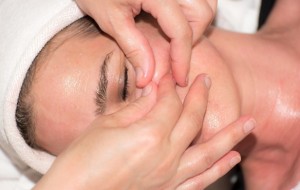Dermal Filler Options for Every Age: Tailoring Treatments to Your Skin's Needs
This article explores the diverse range of dermal filler options available for different age groups, emphasizing the importance of tailoring treatments to individual skin needs. It delves into how skin changes over time and the specific concerns that arise at various life stages.
Understanding Dermal Fillers and Their Role in Skincare
What Are Dermal Fillers?
Dermal fillers are injectable substances used to restore volume, smooth lines, and enhance facial contours. They are a popular non-surgical option for facial rejuvenation, offering a less invasive alternative to traditional cosmetic surgery. These fillers are typically composed of hyaluronic acid, calcium hydroxylapatite, poly-L-lactic acid, or polymethylmethacrylate microspheres, each with unique properties and benefits.
How Dermal Fillers Work
Dermal fillers work by replenishing lost volume and stimulating collagen production in the skin. As we age, our skin loses elasticity and volume due to the natural decline of collagen and hyaluronic acid. Fillers help to counteract these effects by filling in wrinkles, plumping up the skin, and providing a more youthful appearance. The results are often immediate, with minimal downtime, making them an attractive option for those seeking quick and effective results. SP Beauty visit their website.
Types of Dermal Fillers
Hyaluronic Acid Fillers
Hyaluronic acid fillers are the most common type of dermal fillers. They are known for their ability to retain moisture, providing a plump and hydrated appearance. Popular brands include Juvederm and Restylane, which are used to treat a variety of areas such as lips, cheeks, and nasolabial folds.
Calcium Hydroxylapatite Fillers
Calcium hydroxylapatite fillers, such as Radiesse, are thicker and provide more structure than hyaluronic acid fillers. They are often used for deeper lines and wrinkles, as well as for enhancing facial contours. These fillers also stimulate collagen production, offering long-lasting results. More from SP Beauty
Poly-L-lactic Acid Fillers
Poly-L-lactic acid fillers, like Sculptra, work by stimulating the body's own collagen production over time. They are typically used for overall facial volume restoration and are ideal for those looking for gradual, natural-looking improvements.
Polymethylmethacrylate (PMMA) Fillers
PMMA fillers, such as Bellafill, contain tiny microspheres that provide long-lasting support beneath the skin. They are often used for deeper wrinkles and acne scars, offering a more permanent solution compared to other fillers.
Benefits of Dermal Fillers
Dermal fillers offer numerous benefits, including immediate results, minimal recovery time, and the ability to customize treatments to individual needs. They can address a wide range of concerns, from fine lines and wrinkles to volume loss and facial asymmetry. The versatility of dermal fillers makes them suitable for individuals of all ages, allowing for tailored treatments that evolve with the skin's changing needs.
Considerations and Safety
When considering dermal fillers, it is important to consult with a qualified and experienced practitioner. They can assess your individual needs and recommend the most appropriate type of filler for your skin. Safety is paramount, and understanding the potential risks and side effects, such as bruising, swelling, or allergic reactions, is crucial. Choosing a reputable provider ensures that the procedure is performed safely and effectively, maximizing the benefits while minimizing potential complications.
The Science Behind Dermal Fillers: How They Work
Understanding Dermal Fillers
Dermal fillers are injectable substances used to restore volume, smooth lines, and enhance facial contours. They are a popular choice for non-surgical facial rejuvenation. The primary goal of dermal fillers is to mimic the natural substances found in the skin, providing a more youthful appearance. Try SP Beauty Today.
Types of Dermal Fillers
Hyaluronic Acid (HA) Fillers
Hyaluronic acid is a naturally occurring substance in the skin that helps retain moisture and add volume. HA fillers are the most common type of dermal fillers and are known for their ability to provide immediate results. They work by attracting and binding water molecules, which helps to plump and hydrate the skin. Popular brands include Juvederm and Restylane.
Calcium Hydroxylapatite (CaHA) Fillers
Calcium hydroxylapatite is a mineral-like compound found in bones. CaHA fillers are thicker than HA fillers and are used to treat deeper lines and wrinkles. They stimulate collagen production, providing long-lasting results. Radiesse is a well-known brand of CaHA fillers.
Poly-L-lactic Acid Fillers
Poly-L-lactic acid is a biodegradable synthetic substance that stimulates collagen production. These fillers are used to treat deeper facial wrinkles and folds. Unlike other fillers, results appear gradually over a few months as collagen is produced. Sculptra is a common brand of poly-L-lactic acid fillers. We love SP Beauty.
Polymethylmethacrylate (PMMA) Fillers
PMMA fillers consist of tiny biocompatible microspheres suspended in a collagen gel. They provide a semi-permanent solution for deep wrinkles and folds. The microspheres remain in place, providing structural support, while the collagen gel is absorbed by the body. Bellafill is a well-known PMMA filler.
Mechanism of Action
Volume Restoration
Dermal fillers restore lost volume by filling in areas where the skin has thinned due to aging or other factors. This is achieved by injecting the filler material beneath the skin, which lifts and supports the overlying tissue. SP Beautican are worth a visit.
Collagen Stimulation
Some dermal fillers, such as CaHA and poly-L-lactic acid, stimulate the body's natural collagen production. Collagen is a protein that provides structure and elasticity to the skin. By promoting collagen synthesis, these fillers help improve skin texture and firmness over time.
Hydration and Moisture Retention
Hyaluronic acid fillers are particularly effective at hydrating the skin. HA molecules attract and retain water, which helps maintain skin moisture and plumpness. This hydration effect contributes to a smoother and more youthful appearance.
Safety and Biocompatibility
Dermal fillers are designed to be biocompatible, meaning they are safe for use in the human body. Most fillers are made from substances that naturally occur in the skin or are synthetically produced to mimic these substances. This reduces the risk of adverse reactions and ensures that the fillers are gradually absorbed by the body over time.
Dermal Filler Options for Your 20s: Preventative and Subtle Enhancements
Understanding the Needs of Skin in Your 20s
In your 20s, your skin is generally at its peak in terms of elasticity and collagen production. However, this is also the ideal time to start considering preventative measures to maintain youthful skin in the long run. The focus during this decade is on subtle enhancements and prevention of early signs of aging, such as fine lines and volume loss. Have you thought about Endolift Treatment?
Common Concerns in Your 20s
Early Signs of Aging
While significant aging signs are not typically a concern in your 20s, some individuals may begin to notice fine lines, particularly around the eyes and mouth. These early signs can be addressed with dermal fillers to maintain a smooth and youthful appearance.
Volume Loss
Though not as pronounced as in later decades, some people in their 20s may experience slight volume loss in areas like the cheeks and lips. This can be due to genetics or lifestyle factors, and dermal fillers can help restore a natural, plump look.
Popular Dermal Filler Options
Hyaluronic Acid Fillers
Hyaluronic acid (HA) fillers are a popular choice for individuals in their 20s due to their natural composition and temporary nature. HA is a substance naturally found in the body, making it a safe option for subtle enhancements. These fillers can be used to smooth out fine lines, enhance lip volume, and add contour to the cheeks.
Collagen-Stimulating Fillers
For those looking to boost their skin's natural collagen production, collagen-stimulating fillers can be an excellent option. These fillers not only provide immediate volume but also encourage the skin to produce more collagen over time, offering long-term benefits.
Treatment Areas and Techniques
Lips
Lip enhancement is a common request among individuals in their 20s. Dermal fillers can be used to add subtle volume and definition to the lips, creating a fuller yet natural look.
Cheeks
Enhancing the cheeks with dermal fillers can provide a youthful contour and address any early signs of volume loss. This treatment can also help in achieving a more balanced facial profile.
Under-Eye Area
The under-eye area is another popular treatment site for those in their 20s. Fillers can help reduce the appearance of dark circles and fine lines, providing a refreshed and well-rested look.
Benefits of Early Intervention
Starting dermal filler treatments in your 20s can have several benefits. By addressing early signs of aging and enhancing facial features subtly, individuals can maintain their youthful appearance for longer. Early intervention can also prevent the need for more invasive procedures in the future, as maintaining skin health and volume can slow down the aging process.
Navigating Your 30s: Addressing Early Signs of Aging with Fillers
Understanding the Early Signs of Aging in Your 30s
In your 30s, the skin begins to show subtle signs of aging. Fine lines may start to appear around the eyes and mouth, and you might notice a slight loss of volume in the cheeks and lips. The skin's natural collagen production starts to decline, leading to a decrease in elasticity and firmness. These changes are often exacerbated by lifestyle factors such as sun exposure, stress, and environmental pollutants.
Common Concerns and Areas for Treatment
Fine Lines and Wrinkles
The early signs of fine lines, particularly around the eyes (crow's feet) and mouth (smile lines), are common concerns. These lines are often the result of repetitive facial expressions and the natural aging process.
Volume Loss
Volume loss in the cheeks and under-eye area can lead to a tired or hollow appearance. This is due to the gradual decrease in collagen and fat beneath the skin.
Lip Enhancement
Many individuals in their 30s seek to enhance their lips, either to restore lost volume or to achieve a fuller appearance. This can also help in smoothing out fine lines around the mouth.
Types of Fillers Suitable for the 30s
Hyaluronic Acid Fillers
Hyaluronic acid (HA) fillers are popular for their ability to provide natural-looking results. They are effective in addressing fine lines, restoring volume, and enhancing lips. HA fillers are temporary, with results lasting from six months to a year, making them a flexible option for those new to dermal fillers.
Calcium Hydroxylapatite Fillers
Calcium hydroxylapatite fillers are denser than HA fillers and are often used for deeper lines and to restore volume in the cheeks. They stimulate natural collagen production, providing longer-lasting results, typically up to a year or more.
Tailoring Treatments to Individual Needs
Personalized Consultation
A personalized consultation with a qualified practitioner is essential to assess individual needs and goals. This involves evaluating skin type, facial structure, and specific areas of concern to create a tailored treatment plan.
Combination Treatments
Combining fillers with other non-invasive treatments, such as Botox or laser therapy, can enhance results. This approach addresses multiple signs of aging simultaneously, providing a more comprehensive rejuvenation.
Maintenance and Follow-Up
Regular follow-up appointments are crucial to maintain results and make any necessary adjustments. This ensures that the treatment continues to meet the evolving needs of the skin as it ages.
Optimal Filler Choices for Your 40s: Restoring Volume and Contour
Understanding the Changes in Your 40s
In your 40s, the skin undergoes significant changes due to a combination of intrinsic aging and external factors. Collagen and elastin production decreases, leading to a loss of skin elasticity and firmness. The natural fat pads in the face begin to diminish and shift, resulting in volume loss, particularly in the cheeks, under-eye area, and around the mouth. These changes can lead to a more tired or aged appearance, making it essential to choose dermal fillers that address these specific concerns.
Key Areas to Target
Cheeks
Volume loss in the cheeks is a common concern in the 40s. Restoring volume in this area can lift the face and create a more youthful contour. Hyaluronic acid-based fillers, such as Juvederm Voluma or Restylane Lyft, are popular choices for cheek augmentation. These fillers provide a natural-looking lift and can last up to two years.
Under-Eye Area
The under-eye area can develop hollows or dark circles due to fat loss and thinning skin. Fillers like Restylane or Belotero Balance are often used to address these concerns. These fillers are designed to be injected superficially and can help smooth out the tear troughs, reducing the appearance of tiredness.
Nasolabial Folds and Marionette Lines
Nasolabial folds and marionette lines become more pronounced in the 40s. To soften these lines, fillers such as Juvederm Ultra or Radiesse can be effective. These fillers add volume and support to the area, reducing the depth of the lines and enhancing facial harmony.
Choosing the Right Filler
Hyaluronic Acid Fillers
Hyaluronic acid fillers are versatile and widely used for their ability to attract and retain moisture, providing a plumping effect. They are reversible, which offers an added layer of safety for those new to fillers. The choice of specific hyaluronic acid filler depends on the area being treated and the desired outcome.
Calcium Hydroxylapatite Fillers
Calcium hydroxylapatite fillers, like Radiesse, are known for their ability to stimulate collagen production. They are often used for deeper lines and to restore volume in areas like the cheeks and jawline. These fillers provide immediate results and continue to improve skin texture over time.
Poly-L-lactic Acid Fillers
Poly-L-lactic acid fillers, such as Sculptra, work by stimulating the body's own collagen production. They are ideal for those looking for gradual, long-lasting results. Sculptra is typically used for overall facial volume restoration and is administered in a series of treatments over several months.
Consultation and Customization
A personalized approach is crucial when selecting dermal fillers in your 40s. Consulting with a qualified and experienced practitioner is essential to assess your unique facial structure and aging concerns. A tailored treatment plan can be developed to address specific areas of volume loss and contouring, ensuring natural and harmonious results.
Tailoring Treatments in Your 50s and Beyond: Comprehensive Rejuvenation
Understanding the Aging Process in Your 50s and Beyond
As individuals enter their 50s and beyond, the skin undergoes significant changes due to a combination of intrinsic and extrinsic aging factors. Collagen and elastin production decreases, leading to a loss of skin elasticity and firmness. The skin's natural moisture barrier weakens, resulting in dryness and a dull complexion. Additionally, the cumulative effects of sun exposure, lifestyle choices, and environmental factors become more pronounced, contributing to the appearance of wrinkles, fine lines, and age spots.
Key Areas of Concern
Volume Loss
One of the most noticeable changes in the 50s and beyond is the loss of facial volume. This occurs as the fat pads in the cheeks, temples, and under the eyes diminish, leading to a hollowed appearance and sagging skin. Volume loss can also affect the lips, making them appear thinner and less defined.
Wrinkles and Fine Lines
Dynamic wrinkles, caused by repeated facial expressions, and static wrinkles, which develop due to the loss of skin elasticity, become more prominent. Common areas of concern include the forehead, around the eyes (crow's feet), and around the mouth (marionette lines and nasolabial folds).
Skin Texture and Tone
The skin may develop a rough texture and uneven tone due to the accumulation of dead skin cells and reduced cell turnover. Age spots, also known as liver spots or solar lentigines, may appear due to prolonged sun exposure.
Dermal Filler Options for Comprehensive Rejuvenation
Hyaluronic Acid Fillers
Hyaluronic acid (HA) fillers are a popular choice for addressing volume loss and enhancing facial contours. These fillers are versatile and can be used to restore volume in the cheeks, temples, and under-eye areas. HA fillers also help to hydrate the skin, improving its overall texture and appearance.
Calcium Hydroxylapatite Fillers
Calcium hydroxylapatite fillers are denser than HA fillers and are often used for deeper lines and wrinkles. They are effective in treating nasolabial folds and marionette lines, providing a more lifted and youthful appearance.
Poly-L-lactic Acid Fillers
Poly-L-lactic acid fillers work by stimulating the body's natural collagen production. These fillers are ideal for individuals seeking gradual and long-lasting results. They are commonly used to address volume loss in larger areas of the face, such as the cheeks and temples.
Autologous Fat Transfer
Autologous fat transfer involves harvesting fat from one area of the body and injecting it into areas of the face that require volume restoration. This technique provides a natural and long-lasting solution for volume loss and is particularly beneficial for individuals seeking a more comprehensive rejuvenation.
Customizing Treatment Plans
Consultation and Assessment
A thorough consultation with a qualified practitioner is essential to assess the individual's unique facial anatomy, skin condition, and aesthetic goals. This allows for the development of a personalized treatment plan that addresses specific concerns and achieves natural-looking results.
Combination Therapies
Combining dermal fillers with other aesthetic treatments can enhance overall results. For example, pairing fillers with neuromodulators like Botox can address both volume loss and dynamic wrinkles. Laser treatments or chemical peels can improve skin texture and tone, complementing the effects of dermal fillers.
Maintenance and Follow-Up
Regular follow-up appointments are crucial to monitor the results and make any necessary adjustments to the treatment plan. Maintenance treatments may be required to sustain the desired outcome, as the effects of dermal fillers are temporary and vary depending on the type of filler used.
Customizing Filler Treatments: Considering Skin Type and Lifestyle
Understanding Skin Types
Oily Skin
Oily skin is characterized by excess sebum production, which can lead to enlarged pores and a shiny complexion. When customizing filler treatments for individuals with oily skin, it is crucial to select products that do not exacerbate oiliness or clog pores. Hyaluronic acid-based fillers are often recommended as they are lightweight and hydrating without being overly greasy. Practitioners should also consider the placement of fillers to avoid areas prone to oiliness, focusing instead on areas that require volume or contouring.
Dry Skin
Dry skin lacks moisture and can appear flaky or rough. For those with dry skin, fillers that provide hydration and improve skin texture are ideal. Hyaluronic acid fillers are particularly beneficial as they attract and retain moisture, enhancing skin suppleness. It is important to ensure that the filler used is compatible with the skin's needs, providing both volume and hydration to improve overall skin health and appearance.
Sensitive Skin
Sensitive skin is prone to redness, irritation, and reactions. When treating sensitive skin, it is essential to choose fillers that are gentle and have a low risk of causing adverse reactions. Practitioners should conduct a thorough assessment to identify any potential allergens or irritants. Using fillers with a smooth consistency and minimal additives can help minimize the risk of irritation. Pre- and post-treatment care should also be tailored to soothe and protect sensitive skin.
Combination Skin
Combination skin features both oily and dry areas, requiring a balanced approach to filler treatments. Customization involves targeting specific areas with appropriate fillers. For instance, lightweight fillers can be used in oilier zones, while more hydrating options can be applied to drier areas. The goal is to achieve a harmonious balance that addresses the unique needs of each skin type present on the face.
Lifestyle Considerations
Active Lifestyle
Individuals with an active lifestyle, such as athletes or those who frequently engage in physical activities, may require fillers that offer durability and resilience. These individuals often experience increased blood flow and facial movement, which can affect the longevity of fillers. Choosing products with a higher viscosity and cross-linking can provide longer-lasting results. It is also important to schedule treatments around periods of intense activity to allow for proper healing and integration of the filler.
Sun Exposure
For those who spend significant time outdoors or in sunny climates, sun exposure can impact the skin's condition and the effectiveness of fillers. Sun protection is crucial, and practitioners should emphasize the importance of using sunscreen and protective measures post-treatment. Fillers that offer additional hydration and support skin health can be beneficial in counteracting the drying effects of the sun.
Stress and Sleep Patterns
Stress and lack of sleep can contribute to premature aging and affect skin quality. When customizing filler treatments, it is important to consider the impact of these lifestyle factors. Fillers that provide rejuvenation and support collagen production can help mitigate the effects of stress and poor sleep. Encouraging a holistic approach that includes stress management and adequate rest can enhance the overall results of filler treatments.
Dietary Habits
Diet plays a significant role in skin health and the effectiveness of filler treatments. A diet rich in antioxidants, vitamins, and minerals supports skin vitality and can enhance the results of fillers. Practitioners should discuss dietary habits with patients and recommend nutritional adjustments that promote skin health. Hydration is also key, as well-hydrated skin responds better to filler treatments and maintains results longer.
Conclusion: Choosing the Right Filler for Your Age and Skin Needs
Understanding Your Skin's Unique Requirements
Every individual's skin is unique, and its needs evolve over time. As we age, our skin undergoes various changes, such as loss of elasticity, volume depletion, and the appearance of fine lines and wrinkles. Understanding these changes is crucial in selecting the most appropriate dermal filler. Consulting with a qualified dermatologist or aesthetic practitioner can help assess your skin's specific needs and recommend the best treatment options.
Tailoring Treatments by Age Group
In Your 20s and 30s
During your 20s and 30s, the focus is often on prevention and subtle enhancements. The skin is generally still firm and elastic, but early signs of aging may start to appear. Hyaluronic acid-based fillers, such as Juvederm or Restylane, are popular choices for adding volume to the lips or cheeks and for smoothing out nasolabial folds. These fillers are known for their hydrating properties and natural-looking results.
In Your 40s and 50s
As you enter your 40s and 50s, collagen production decreases, leading to more noticeable volume loss and deeper wrinkles. At this stage, a combination of fillers might be recommended to address multiple concerns. Calcium hydroxylapatite fillers like Radiesse can provide structure and stimulate collagen production, while poly-L-lactic acid fillers such as Sculptra can help restore facial volume over time. These options are ideal for those looking to achieve a more youthful appearance without surgery.
In Your 60s and Beyond
For individuals in their 60s and beyond, the skin may exhibit significant volume loss, sagging, and deep wrinkles. A comprehensive approach using a combination of fillers and other treatments, such as laser therapy or skin tightening procedures, may be necessary. Hyaluronic acid fillers can still be effective for targeted areas, but longer-lasting options like polymethyl methacrylate (PMMA) fillers, such as Bellafill, may be considered for more permanent results. These fillers are often used to treat deeper lines and provide structural support.
Considering Lifestyle and Personal Preferences
When choosing a dermal filler, it's important to consider your lifestyle and personal preferences. Some fillers require more frequent maintenance, while others offer longer-lasting results. Your comfort level with the procedure, recovery time, and desired outcome should all be taken into account. Discussing these factors with your practitioner can help ensure that the chosen treatment aligns with your expectations and lifestyle.
The Importance of Professional Guidance
Selecting the right dermal filler is a decision that should be made with the guidance of a qualified professional. A skilled practitioner can evaluate your skin's condition, discuss your aesthetic goals, and recommend a personalized treatment plan. This collaboration ensures that the chosen filler not only addresses your current skin needs but also enhances your natural beauty in a safe and effective manner.











Comments
0 comment